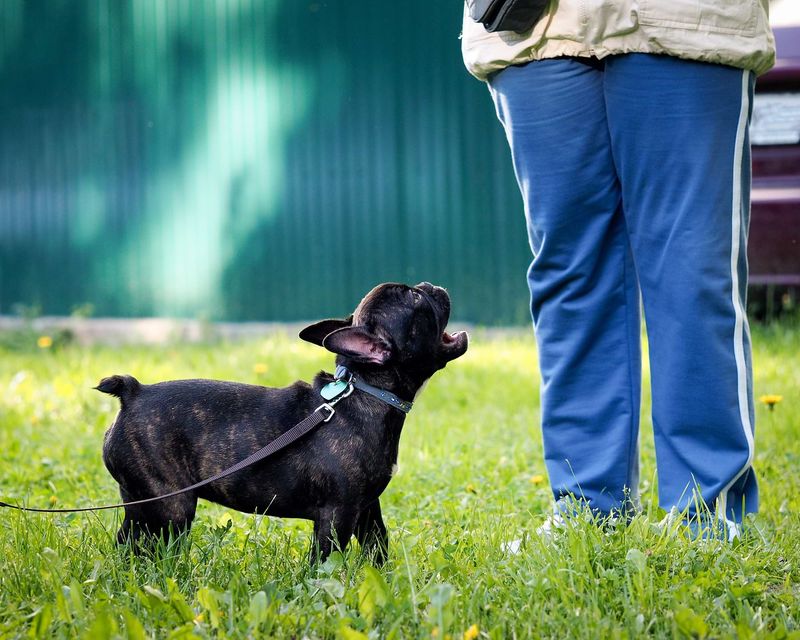10 Best Methods To Prevent A Dog From Barking Too Much

Dogs may bark for a variety of reasons, ranging from boredom to alerting their owners of possible intruders. While barking is natural, excessive barking can be a nuisance. Here are effective methods to help prevent your dog from barking excessively.
1. Positive Reinforcement Training

Positive reinforcement training can be highly effective in curbing excessive barking. When your dog remains quiet upon command, reward them with a treat or affection. This method encourages the dog to associate silence with positive outcomes.
Consistency is key; ensure everyone in the household follows the same training routine. Varying commands or rewards can confuse the dog, leading to inconsistent behavior.
Over time, your dog will learn that being calm and quiet is beneficial, reducing the tendency to bark unnecessarily.
2. Desensitization

Desensitization involves gradually exposing your dog to the source of their barking in a controlled manner. For dogs that bark at doorbells, try playing the sound at low volume while rewarding calm behavior. If your dog barks every time you play an instrument, play it around them more often!
Gradually increase the volume as the dog becomes accustomed to the sound without reacting. This process helps the dog understand that the sound is not a threat and doesn’t require barking.
Patience is essential, as this method may take time, but it can effectively reduce noise-triggered barking.
3. Exercise And Mental Stimulation

Boredom and unexpended energy often lead to barking. Regular exercise and mental stimulation can significantly mitigate this behavior. Engage your dog in daily walks or play sessions to tire them out.
Additionally, provide toys or puzzles that challenge their mind, keeping them occupied and reducing the urge to bark out of boredom. A well-exercised dog is generally more content and less likely to bark unnecessarily.
4. Anti-Bark Collars

Anti-bark collars can be a viable solution for some dogs, emitting a sound, vibration, or mild static pulse when barking is detected. These collars offer immediate feedback to the dog to discourage barking.
It’s important to choose a collar that suits your dog’s size and temperament, ensuring it’s both effective and humane.
While some owners find success with anti-bark collars, they should be used cautiously and not as a substitute for proper training.
5. Create A Calm Environment

Creating a calm environment can help reduce a dog’s inclination to bark. Soft music, dim lighting, or white noise can soothe an anxious dog.
Identify potential stressors like loud noises or chaotic surroundings, and minimize them wherever possible. By fostering a tranquil atmosphere, you can help your dog feel more secure and less prone to barking.
6. Teach The ‘Quiet’ Command

Teaching the ‘quiet’ command involves instructing your dog to stop barking on cue. Start by letting your dog bark a few times, then gently say ‘quiet’ while holding a treat.
Once the dog stops barking, reward them with the treat. Repeat this process consistently to reinforce the behavior. With regular practice, your dog will learn to associate the ‘quiet’ command with silence and rewards.
7. Socialization

Socialization is crucial for dogs that bark out of fear or lack of exposure. Regularly introduce your dog to new people, environments, and other dogs to reduce anxiety-driven barking.
A well-socialized dog is likely to feel more confident and less threatened by unfamiliar situations. This method not only helps with barking but also contributes to a well-rounded, happy pet.
8. Identify And Remove Barking Triggers

Identifying and removing barking triggers can help manage excessive barking. Observe your dog’s behavior to determine what prompts the barking, such as passing cars or other animals.
If possible, eliminate or minimize these triggers by closing curtains or distracting the dog with engaging activities. Addressing the root cause of barking is a proactive approach to reducing unwanted noise.
9. Professional Training

Sometimes, seeking professional help is the best course of action. Especially if your dog belongs to a breed which requires more training.
A certified dog trainer can offer tailored strategies and insights to address persistent barking issues. Trainers often have experience with a variety of breeds and can provide personalized guidance to suit your dog’s specific needs.
Investing in professional training can lead to long-term improvements in your dog’s behavior, ensuring a quieter home environment.
10. Provide Adequate Attention And Companionship

Dogs often bark for attention or due to loneliness. Ensuring your dog receives adequate attention and companionship can alleviate these issues. Spend quality time with your pet daily, through play, cuddling, or training sessions.
Consider arranging for a dog sitter or day-care services if your dog is left alone for extended periods. Providing emotional support and companionship can significantly reduce attention-seeking barking.
Think of it this way: dogs have been our best friends for centuries. They fall into the category of animals that truly made a difference in supporting us in so many ways. The least we can do is be there for them when they’re going through a difficult time.






